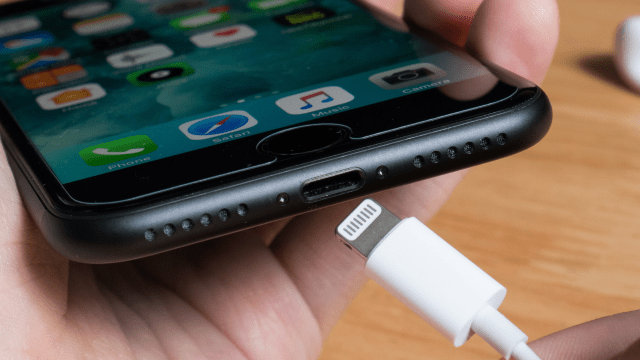Last year, the Apple iPhone 15 range axed the Lightning cable after more than a decade. Going forward, the company has switched to USB-C in place of the Lightning connector, a port established as a standard by the European Union in 2023.
Apple used the Lightning cable for 12 years , ever since the iPhone 5 in 2012. In that time, Android phones phased from Micro-USB, to Mini-USB, and then to the current standard of USB-C – which has proven to be the preferred technology type of most manufacturers for its high wattage potential.
And although many Apple fans might have been attached to the Lightning cable, let’s get something clear: it’s now not a terrific standard. Compared to USB-C, it was slower in terms of data transfer, slower in maximum wattage (and therefore highest potential charging speed), and it was ultimately unique to a handful of products from a single company. It’s bad.
Why does the Lightning cable suck?
Let’s start with transfer speeds. Lightning was reportedly capable of data transfer up to 480Mbps, while cables using the USB-C plug can transfer data at 10Gbps (that’s more than 20x faster). Those ultra-fast USB-C cables capable of 10Gbps speeds are USB 3.1 and are part of the newest standard using the plug, built on top of previous models capable of 480Mbps and 5Gbps.
There’s also max wattage to consider. As we noted in a previous article focused on fast charging, the max wattage that a Lightning cable can deliver is 96W, when delivered via a USB-C-to-Lightning charger. While most USB-C cables can deliver up to 100W (which is only a difference by 4W), the newest version of USB-C and power delivery technology will be able to transfer at wattages of up to 240W, leaving the Lightning cable in the dust.
It’s no lie that, when the Lightning cable was introduced, it was substantially faster than the cable it was replacing – the 30-pin plug – however these two cables, unfortunately, lead to another big problem – proprietary tech. Only Apple has ever used the Lightning cable, and it only uses it these days on the following supported products:
- The iPhone 12, 13, and 14 ranges (along with every iPhone since the iPhone 5)
- The 9th-generation iPad (all other currently supported iPads use USB-C, whereas early iPad models used Lightning and 30-pin)
- All Apple AirPods models, except for the most recent AirPods Pro 2
- The Magic Mouse, Keyboard, and Trackpad.
All other Apple products use either USB-C (either standard or via Thunderbolt), MagSafe charging, QI charging, or wireless. Of course many Apple products, including phones, use wireless charging, they will still require a cabled option – at least for the foreseeable future – and we’re also talking about fast charging and data transfer here, which wireless at the moment cannot begin to compete with.
And while the use of proprietary cables isn’t something unique to Apple (Microsoft does the same with the charger for the Surface range of laptops), and while the popularity of the iPhone has made the Lightning cable widespread, it leads to another problem – Apple’s control over supply. Basically, the Lightning cable is an Apple patent, and because the tech belongs to Apple, third-party manufacturers need to pay Apple a licencing fee. The requirement for third parties to pay this, as noted by Tech Insider, can drive up the price of accessories, with the need to pay Apple for the rights to sell Lightning-connector products.
So, for these reasons, you can probably feel good about Apple sunsetting the Lightning cable on its devices. Sure, replacing your Lightning cable with USB-C will cost you extra, but that’s the nature of tech, frankly (it just sucks so much to come during a cost-of-living crisis). A new standard comes around and, suddenly, all your old tech needs a new adapter.
When technology like USB-C is standardised, it’s a win for everybody in the long run, with fewer cable types to need and assurance that you don’t need a specialised cable for a single piece of tech. A good example of this is the standardised IEC13 connector, which had been standardised by the International Electrotechnical Commission and is now the dominant plug for computer power supplies and monitors.
Let’s hope that Apple actually does it this time, though – the iPhone switch to USB-C has been getting spoken about for years.
